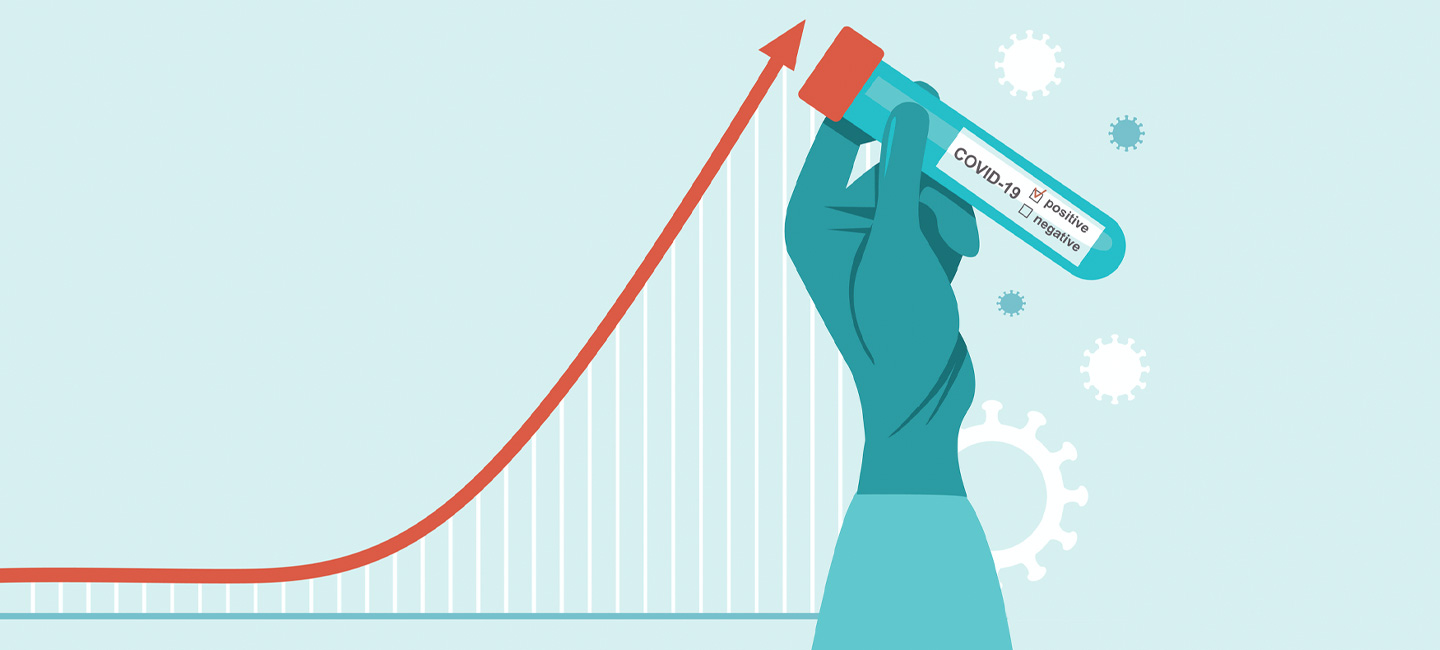Is There an End in Sight for the Current COVID-19 Surge?
Despite the alarming rise in COVID-19 cases in the United States, there is reason to hope that the number could drop just as quickly.
Centers for Disease Control and Prevention Director Rochelle Walensky recently told reporters she believes that data coming out of South Africa indicates the current COVID-19 surge is following an “ice pick” pattern with a sharp increase of cases followed by a sharp decline.
“I do think in places that we are seeing this really steep incline, that we may well see also a precipitous decline, but we’re also a much bigger country than South Africa,” Walensky said. “And so it may very well be that we see this ice pick shape, but that it travels across the country.”
We are standing on the shoulders of 2 years of science demonstrating that you are most contagious 1-2 days prior to symptom onset & in the 2-3 days after symptoms. In most cases, the vast majority of contagiousness is behind you by day 5. https://t.co/idj0C9Unb2
— Rochelle Walensky, MD, MPH (@CDCDirector) January 7, 2022
“Significantly More Contagious”
According to the World Health Organization, the global number of new cases increased by 71% between Dec. 27 and Jan. 2 compared to the previous week, while the number of new deaths decreased by 10%. In the United States, more than 700,000 new cases are being reported each day.
“We know that it is significantly more contagious than all of the variants before it,” said Dr. John Greene, chair of the Infectious Diseases Program at Moffitt Cancer Center. “A lot of experts feel we’re going to hit the top of the spike at the end of January, maybe mid-February and then it’ll start coming down, so that seems to be the safe prediction.”
Between the protection from vaccinations and omicron’s diminished severity, many cases are mild or asymptomatic. According to the CDC, the current seven-day daily average for hospitalizations was more than 16,000, a 60% increase from the previous week.

Dr. John Greene, chair, Infectious Diseases Program
“The quantity of people is so massive you can still have hospitals overwhelmed,” said Greene. “It’s knocking out the workforce so coming up with safe working conditions is the biggest challenge for the CDC right now.”
Clarifying Isolation and Quarantine Period
The CDC recently clarified its guidelines for returning to work following a positive COVID-19 test. The agency shortened the recommended isolation period from 10 days to five for those no longer experiencing symptoms (must be fever free for 24 hours without using medication). The CDC added that people can use rapid antigen tests around day five of their isolation periods if they want to and have access to them, but did not recommend requiring them for return to work.
Dr. Henry Walke, head of the CDC’s Division of Preparedness and Emerging Infections, recommended asymptomatic patients should wear a mask for an additional five days.
“The results of a rapid test late in the course of COVID-19 illness do not indicate how contagious a person remains,” said Walke. “Regardless of the test result, wearing a well-fitting mask after those five days of isolation is still recommended.”



